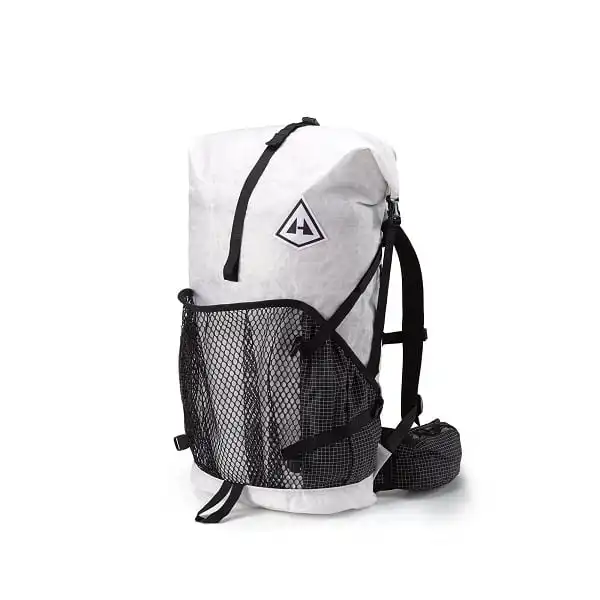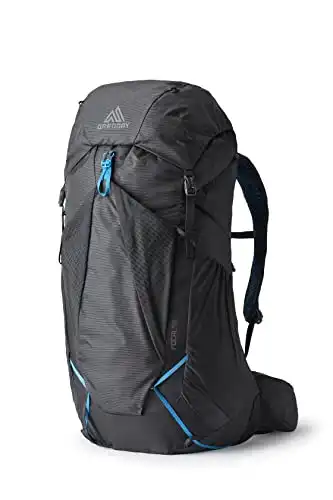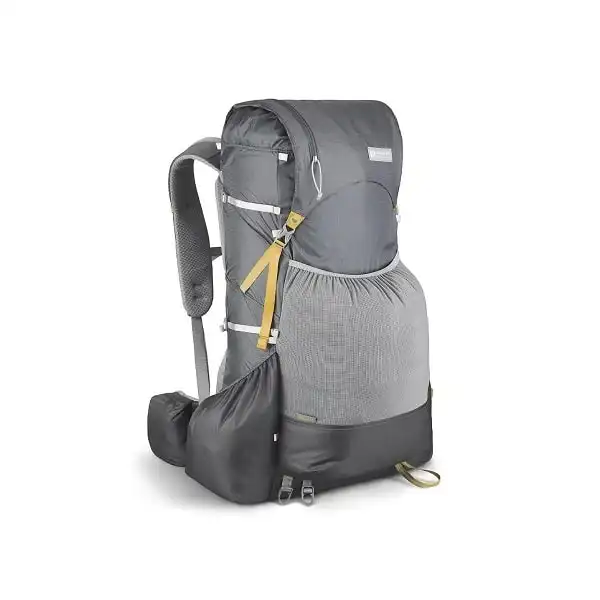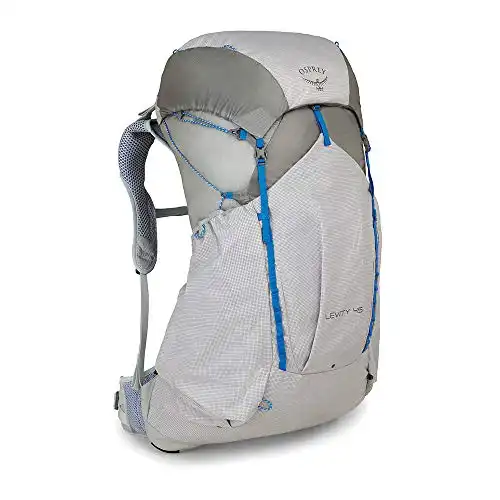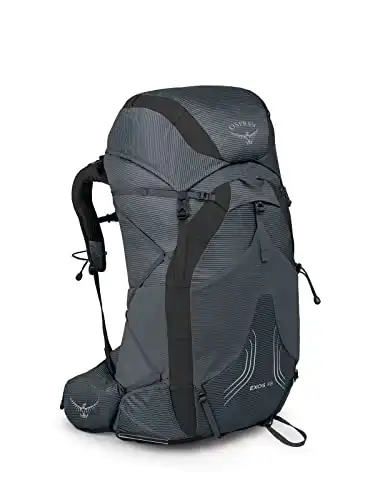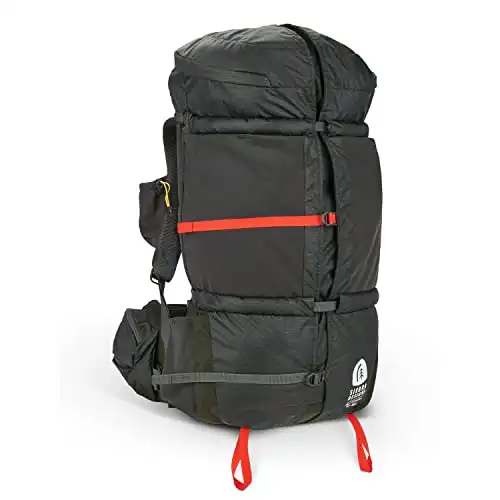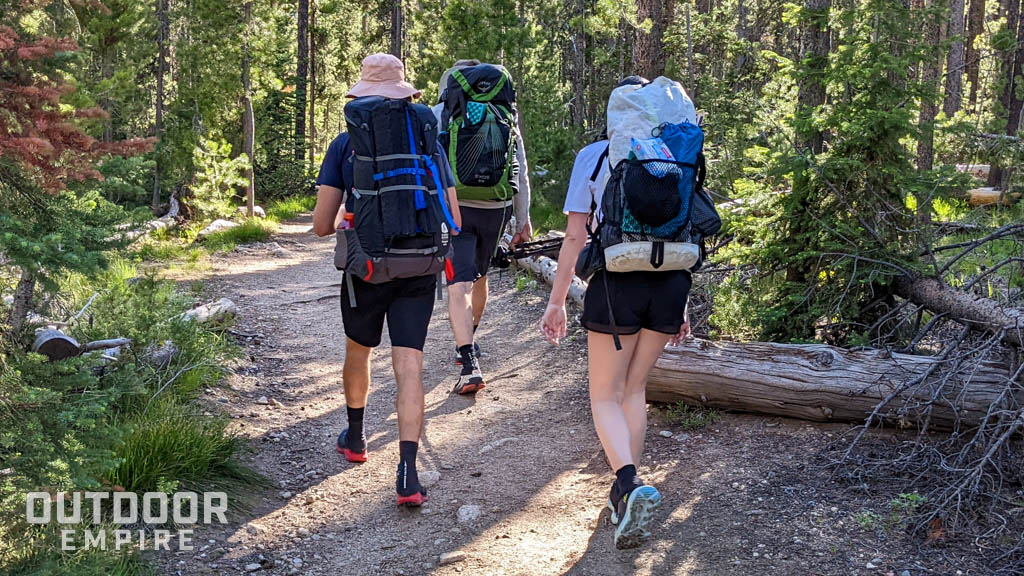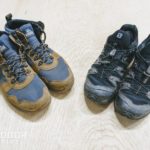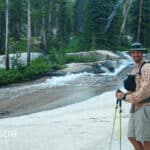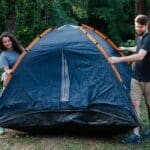Last spring and summer, I was able to test 5 of the best ultralight backpacks on the market, and they are still current models today. I personally wore every pack as I hiked through the desert canyons of western Oregon and the high mountain meadows of Central Idaho and I had a blast along the way.
There is a dizzying array of amazing packs on the market today, and I wanted to try them all. Unfortunately, I did not personally have the time to test every pack out there so I decided to narrow it down to five.
It was a daunting task, so to help narrow it down, I made a list of things I was looking for.
Disclosure: As an Amazon Associate I earn from qualifying purchases. Most links to merchants in this article are affiliate links. When you buy something through one of our links, we may earn a small commission at no cost to you.
Specifications Used to Pick the Packs on This List
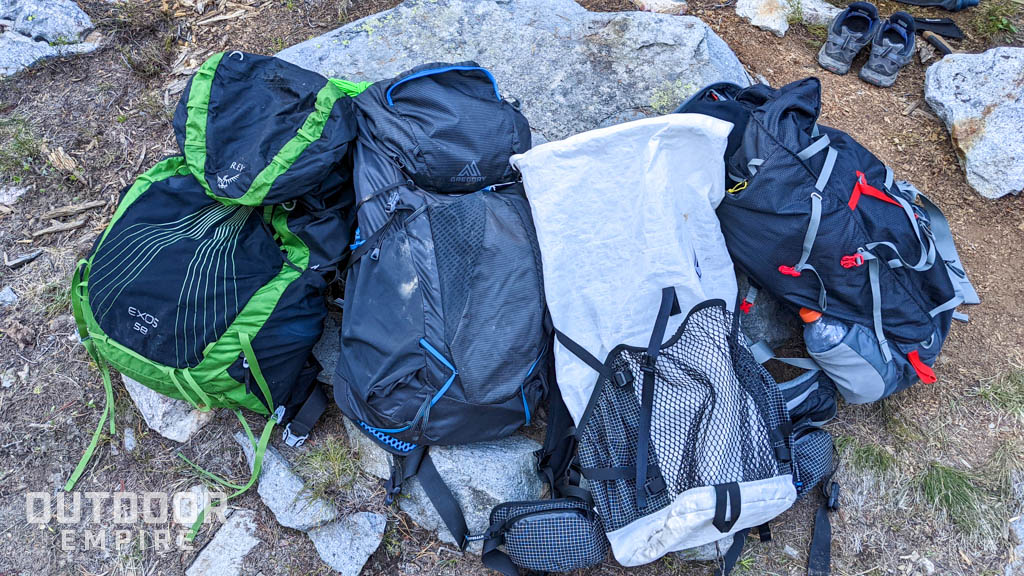
1. Pack weight between 1.5 to 2.5 pounds
For me, this is the perfect weight for a pack. While there are lighter packs on the market, the packs in this weight range tend to hold up better and have the right mix of features.
2. Size between 40 to 50 liters of capacity
All of the packs on this list come in bigger capacities, but 40 to 50 liters for me is the sweet spot. If my pack is too big, I just fill it with stuff I don’t need. I’ve also used smaller packs and they are perfect for overnight trips but don’t carry all the food I need as I push past 2 or 3 days.
3. Well-established manufacturers
There are a lot of great packs made by cottage industry brands out there, but I wanted packs that I could order with no wait time. I’m not that patient of a person.
4. Weight capacity between 20 to 30 pounds
We are living in the golden age of ultralight gear and anyone should, with a bit of thought and experience, be able to keep their pack below 30 pounds and still be able to carry the necessities.
I prefer to backpack for 2-5 days, averaging 20-30 miles per day, with a pack weighing around 25 pounds. The packs on this list are perfect for the type of backpacking I do.
Recommendations at a Glance
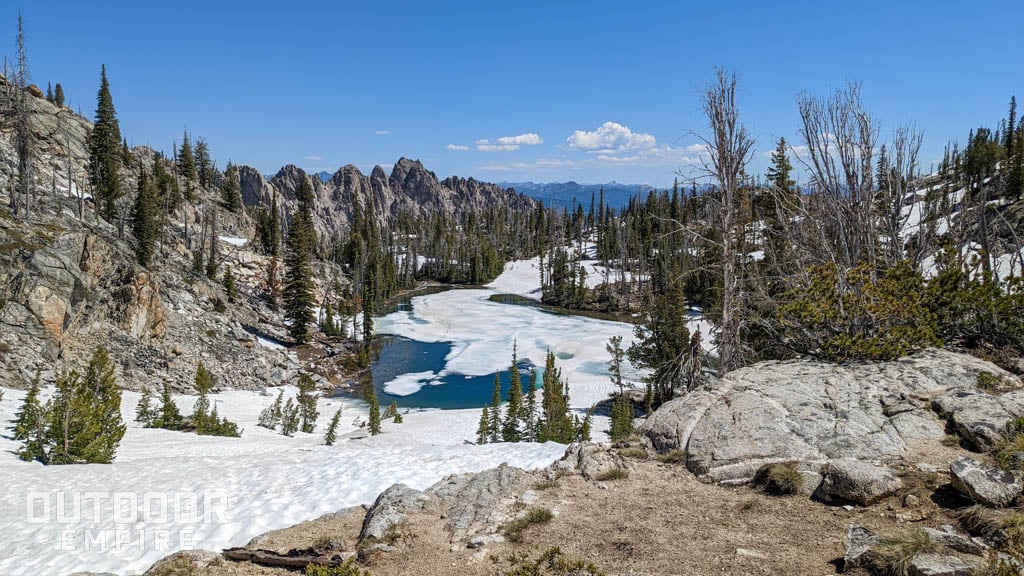
Every pack on this list is great. They are well made, and I think that you would be happy with just about any pack here. However, each pack shines in a slightly different way. I will talk about each of these packs in a little more detail below, but here are my general recommendations at a glance.
- Most durable and my top pick: Hyperlite Mountain Gear Junction 2400
- Most comfortable and runner up: Gregory Focal 48 (Facet 45 for women)
- Best gateway into ultralight: Gossamer Gear Gorilla 50
- Lightest weight full-featured pack: Osprey Levity 45 (Lumina for women)
- Most versatile and least expensive: Sierra Designs Flex Capacitor 40-60
Best Ultralight Packs of 2023: Outdoor Empire Reviews
If you wanna, watch our video review on YouTube. It just might make you chuckle!
At Outdoor Empire, we look at five criteria when comparing backpacks: construction, weight distribution, comfort, versatility, and value.
Each product gets a score between 1 and 5 for each category. The average of these category scores is the Outdoor Empire Score. This way of ranking helps us be as objective as possible.
1. Best Overall Ultralight Backpack
Outdoor Empire Score: 4.3
Retail Price: $349
Weight: 1.94 lbs
Max Carry Capacity: 30 lbs
Volume: 49.8 liters
- Tough, water resistant, lightweight
- Expensive, takes some skill to use
The Hyperlite Mountain Gear Junction 2400 is one tough pack. It’s made from Dyneema Composite Fabric (DCF) which has an amazing strength-to-weight ratio. It is very abrasion resistant, water resistant, and light. This just might be the perfect pack material. Then why doesn’t everyone use it? Because it’s also expensive. The Junction 2400 comes in about $100 more than the other packs on this list.
Hyperlite has made good use of the DCF, making it a lightweight and efficient pack. They have stripped off most of the bells and whistles to make this a streamlined pack designed to hike mile after mile on trail and off. Some might think that some of the things left on the cutting room floor were essential, like a fully formed frame and a top pocket.
The pack is comfortable but not the most comfortable on this list. The back panel offers no ventilation so be prepared for a sweaty shirt even after a mild effort on the trail. The pack does require a lot of care in how you pack it. However, I had no problem wearing the pack all day long once dialed.
The Junction 2400 is for the experienced backpacker looking to jump head first into ultralight backpacking. It is tough, lightweight, and streamlined, but if you have the necessary skills to use it properly, it will last a lifetime and allow you to carry a light load anywhere your feet and imagination are willing to take you.
2. The Most Comfortable
Outdoor Empire Score: 4.2
Retail Price: $229.95
Weight: 2.54 lbs
Max Carry Weight: 30 lbs
Volume: 48 liters (58L size also available)
- Comfortable, top pocket, full frame, trampoline style back panel, the most useful side pockets I have ever used
- Relatively heavy for an ultralight pack
Compare Price: Moosejaw
The Gregory Focal 48 (Facet 45 for women) is a well-made pack by a well-known pack manufacturer. The pack has the look and feel of a traditional pack and includes most of the features that Gregory has on their more substantial packs, including a top pocket, load lifter straps, and a lightweight aluminum frame. Including these features comes at a cost as this is one of the heaviest packs on our list.
However, I find it to be the most comfortable. The trampoline-style back panel keeps sharp objects in the pack from digging into your back and provides an amazing amount of ventilation. This pack was more like putting on a piece of clothing than a pack.
The Focal 48 also had the most convenient side pockets of any pack in this review. If you carry your water bottle in the side pocket, as I do, you will love them. I was easily able to get the water bottle in and out without having to dislocate my shoulder.
If you want a comfortable, lightweight pack that looks and functions more like a traditional pack, then the Gregory Focal 48 is for you. If you want the lightest pack out there, read on.
3. Best Gateway into Ultralight Backpacking
Outdoor Empire Score: 4.1
Retail Price: $255
Weight: 1.90 lbs (down to just over 1 lb)
Max Carry Weight: 30 lbs
Volume: 50 liters
- Weight can be reduced by removing features that you don’t want, comfortable, well thought out design
- Very little back ventilation, fold over style top, sweaty back panel
The Gossamer Gear Gorilla 50 is the gateway pack into the world of ultralight backpacking. It was designed by a company that has been perfecting ultralight gear for decades. It starts light and then allows you, as you get more experienced, to shed extra weight by removing different pieces of the pack.
Have you learned to pack the bag so it is structurally sound and comfortable? Then remove the padding from the back panel and the frame; you just saved yourself six ounces. Got your base weight under 7 pounds and overall weight under 20 pounds? Congratulations, take off the hip belt. That’s another seven and a half ounces that you won’t need where you are going.
The Gorilla is also comfortable to wear. However, there is very little back ventilation, so be prepared for a sweaty back. This pack has the perfect balance of features like hip pockets, side pockets, and a lightweight aluminum frame.
Gossamer Gear has created a great pack that is perfect for people new to ultralight backpacking but are also willing and excited to go down the rabbit hole of seeing just how light you can go. Just don’t be surprised to find yourself contemplating if you really need the handle of your toothbrush.
4. Lightest Weight Full Featured Pack
Outdoor Empire Score: 3.9
Retail Price: $250
Weight: 1.85 lbs
Max Carry weight: 25 lbs
Volume: 45 liters (60L size also available)
- The lightest full-featured pack on this list, comfortable, lots of back ventilation
- Significant pack sway, not the most durable pack
Compare Price: Moosejaw
The Osprey Levity 45 is like a prizefighter trying to take off as much weight as possible before the big fight. While leaving most of the features you would find on a heftier pack, Osprey has whittled the weight to almost nothing. It is amazing how light this pack is, and it still comes with a top pocket, a full aluminum frame, and load-lifting straps.
Like all things in life, light material does come at a cost. The cost for this pack is durability. While I had no problems with this pack during testing, it is far from bomb-proof and feels fragile.
The Levity 45 uses a trampoline-style back panel similar to the Gregory Focal, and I find it almost as comfortable. There is a ridiculous amount of ventilation to your back on this pack. After a long day on the trail, my friend noted that his back was completely dry using this pack while mine was covered in sweat using the Gossamer Gear Gorilla.
The amount of space between the back panel and the back of the pack did cause me some problems. I felt like there was more pack sway than any other pack on this list.
The Osprey Lumina 45 is the same as the Levity, but built to better fit women.
This pack is once again for experienced hikers looking for the lightest weight pack that still comes with the look and feel of a traditional pack.
Unfortunately Osprey has recently discontinued this pack, though you can still find it at some retailers. We’ll have to see if they bring it back or replace it with something new. In the meantime, consider the Osprey Exos 48 (Eja 48 for women).
- Feature-rich, durable, comfortable
- Not as lightweight as Levity
Compare Price: Osprey (Exos), Osprey (Eja), Moosejaw (Exos), Moosejaw (Eja)
The Exos is about a pound heavier than the Levity, but it is much more durable and has even more useful features. One avid backpacking gear reviewer here at Outdoor Empire, Jon, has had the Exos for over three years and swears by it.
5. The Best Pack If You Only Want One
Outdoor Empire Score: 3.6
Retail Price: $189.95
Weight: 3.1 lbs
Max Carry weight: 40 lbs
Volume: 40-60 liters
- Expandable capacity, decent back ventilation, water bottle pockets on shoulder straps
- Limited sizes, no catch-all pocket, compression straps require some fiddling, heavy
Compare Price: Sierra Designs, Sierra Designs (prior year), Moosejaw (prior year), CampSaver
The Sierra Designs Flex Capacitor is designed to expand from 40 to 60 liters using six vertical compression straps and it works pretty well. This gives the pack a wide range of uses from overnight trips to long-distance hauls.
I like the concept of this pack and I can see the appeal. It is basically two packs in one. My biggest problem with it was that it didn’t fit me. All the other packs on this list come in at least three sizes—small, medium, and large. The Flex Capacitor, however, only comes in small/medium and medium/large. At 5’9” and 175ish pounds, I fit squarely between the two sizes, making it uncomfortable.
My size medium/large is actually the 2022 model and it weighs in at 2.6 pounds. The latest 2023 Flex Capacitor model in size medium/large runs 3.1 pounds! It is now unquestionably the heaviest pack on our list.
The added weight comes primarily from a change in the primary material from 100D Nylon-Poly Ripstop to 100D Nylon Honeycomb fabric. The latest model also has a whole lot less 420D Nylon Oxford fabric (more lightweight and durable than the 100D) than mine does in key high-abrasion areas. But even after reducing the number of compression sacks from six to four in the 2023 model, it’s still a half pound heavier.
These changes pretty much take it out of the typical ultralight category, however, it’s still a lightweight and versatile pack. And a welcome benefit of the material and weight changes is that the MSRP price has dropped by $30. This makes the Flex Capacitor the cheapest option on our list at almost half the price of the Hyperlite Junction.
Sierra Designs was able to pack a ton of features into the pack. There is a lightweight aluminum frame and a back panel that gives a reasonable amount of protection and ventilation. There are also side pockets and pockets on the hip belt.
My favorite feature has to be the water bottle holders on the shoulder straps. This allowed me to carry water where it was easily accessible without having to be a contortionist.
Missing, however, is a pocket on the back of the pack that all the other packs have. This makes organizing gear more difficult.
This is the pack for the person that wants one pack to do it all. On one weekend, you are doing a light and fast trip. Then the next, you are taking Boy Scouts out and want a little extra room to carry some emergency items because someone always forgets their TP or stove.
6 Things to Know Before Buying an Ultralight Backpack

When I was young, my dad decided it would be a good idea to backpack into Independence Lakes. They are a small chain of lakes in South Central Idaho and require about a 4-mile hike one way. We had day hiked into the lakes in the past but it was time to up our game.
My dad, it should be noted, was not a backpacker, so he packed all of our stuff into a large wooden military crate. Imagine the crate in which the Ark of the Covenant was left at the end of Indiana Jones, and you get the idea. It had to be carried by at least two people and the plan, I think, was to rotate who carried it every mile or so, with my dad managing the work and us kids the grunt labor.
We arrived at the trailhead in the dark and made it a total of 100 yards up the trail before the labor pool went on strike.
We called it quits and made camp for the night on the side of the trail.
This was my introduction to backpacking and I have spent the last 30 years refining my equipment and technique.
Below are six things that I have learned over the past 30 years that will help you begin your journey into ultralight backpacking.
1. Ultralight Backpacking is not for everyone
Before deciding to buy an ultralight backpack, it is essential to determine what kind of backpacking you want to do.
If your idea of fun is to pack 5 miles into a lake and camp for several days while fishing and writing in a journal, then you should look elsewhere. Buy a big pack and take all the creature comforts you can carry. There is something to be said about heavy backpacking, and it definitely has its place.
On the other hand, if your idea of fun is 20-plus mile days for weeks on end, then an ultralight pack is probably for you. Generally, the more hours per day you plan on being on your feet with a pack on, the lighter the pack should be. Think of your low pack weight as the most precious luxury you own.

2. Everything else needs to be ultralight as well
This tip goes along with tip number one. Ultralight packs are not meant to carry heavy loads. This means that all of your other gear needs to be ultralight as well. No reason to buy a pack that is 2 pounds and then load it up with a six-pound tent, a three-pound sleeping bag, and other heavy gear. An ultralight pack is a great place to start, but you must lighten your entire kit to be truly happy.
3. Don’t stuff too much into the pack
It is important not to overstuff your ultralight pack. Less stuff equals less weight and one of the reasons that I like small packs is that they help me make better decisions about what to bring.
Also, ultralight backpacks tend to be less durable and if you stuff too much crap inside you might bust out a seem.
Finally, ultralight backpacks usually lack a sophisticated back panel and frame. If you overpack the bag, it tends to round out the back of the pack, making it uncomfortable to carry.
4. You have to pack it just so
On more substantial packs, the pack’s structure is found mainly in the back panel and frame. You can pack the pack haphazardly without compromising how it carries too much. On ultralight packs, the structure comes from how you arrange the items in the pack itself. This requires a fair amount of skill and some experimentation, but it can be very effective when done right.

5. They are not bomb proof
One of the ways that manufacturers make packs lighter is they make them smaller and wait for it… they use lighter-weight materials. They also use less of it. The feather-light pack you have grown to love needs to be treated with kid gloves.
Well, maybe not kid gloves but the pack needs to be treated with respect. With care, even the lightest packs can be used for years.
6. They have fewer features
Another way that manufacturers save weight is by shaving features off of the pack. These include top pouches, robust suspension systems, sophisticated frames, and multiple ways to access gear in the pack itself. These things are easy to overcome with practice and developing skills.
BONUS: Don’t be stupid about cutting too much weight
It is easy to get caught up in the weight loss game, but it can be dangerous even in backpacking. So don’t be stupid about it. Pack the things you need for the trip and be prepared in case something goes wrong. A little bit of gear can go a long way in an emergency.
The other thing that some people do to lighten their load is to remove things that are not used. Trimming excess webbing and cutting off buckles you never use can add up. Just don’t compromise the utility of the item in an effort to lose weight.
Have you ever tried to brush your teeth with a toothbrush without a handle? I have, and let me tell you, the 0.5 ounces I saved were not worth the trouble.
How to Choose the Best Ultralight Pack
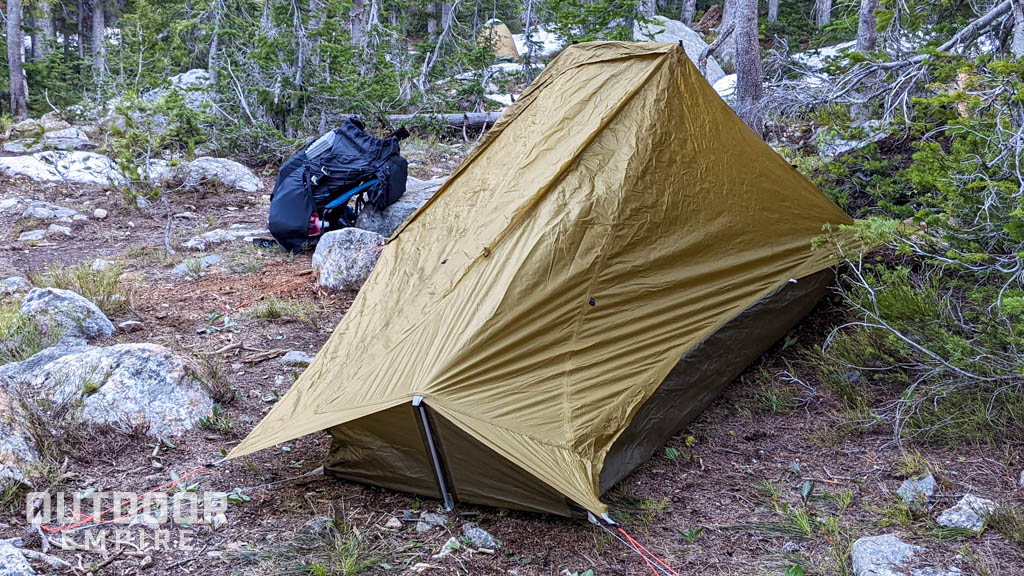
Different people have different criteria that they use to choose an ultralight pack. Most of the differences come from how they are going to use it. If you plan on hiking a long trail that will last for several months, you might choose a different pack than a weekend warrior trying to get the most out of a three-day holiday.
We based our assessment of what we consider the best ultralight backpacks on the following criteria.
Construction
The construction on all five packs on this list is top notch and you can tell that they come from manufacturers that care about their products.
Even though they are all great, they are also different. Hyperlite decided to go with a more exotic material that is lightweight, durable, and water resistant but expensive. The Osprey Levity 45, on the other hand, is made out of the lightest material they could find, leaving it a little bit less durable. The other three sit in the middle.
- Toughest pack: Hyperlite Mountain Gear Junction 2400
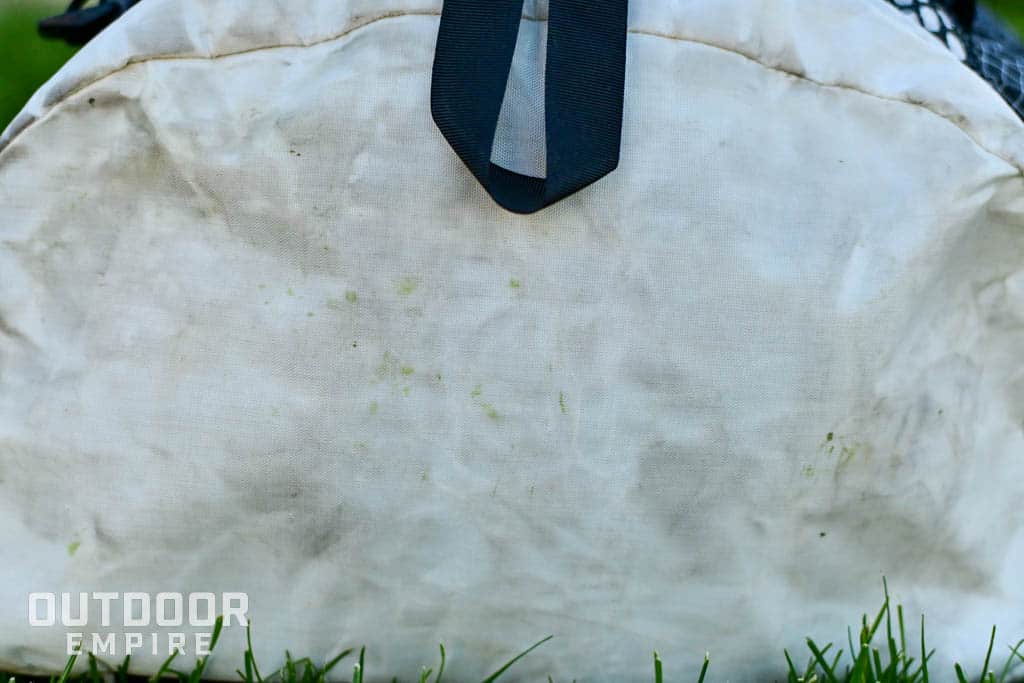
Suspension and Weight Distribution
The suspension system and frame in a pack help give the pack structure and distributes the weight between the shoulders and the waist.
The lighter your pack is, the less reliant you need to be on the pack’s internal frame and suspension system. A pack weighing 30-40 pounds must be distributed between the shoulders and the waist. A pack that weighs 20 pounds can be carried more on the shoulders and still be comfortable.
The Hyperlite Junction 2400 only has two aluminum stays as a frame, and they can be removed if wanted. The Gossamer Gear frame is a little more robust but can also be removed to save weight. Both require skill in packing to build structure into the pack, but when dialed, they distribute weight just fine.
The Sierra Designs Flex Capacitor, Osprey Levity 45, and the Gregory Focal 48 are a little more traditional. All three have a lightweight internal frame and load lifter straps. These straps pull the pack closer to your center of gravity and make it feel lighter.
- Best weight distribution:Gregory Focal 48
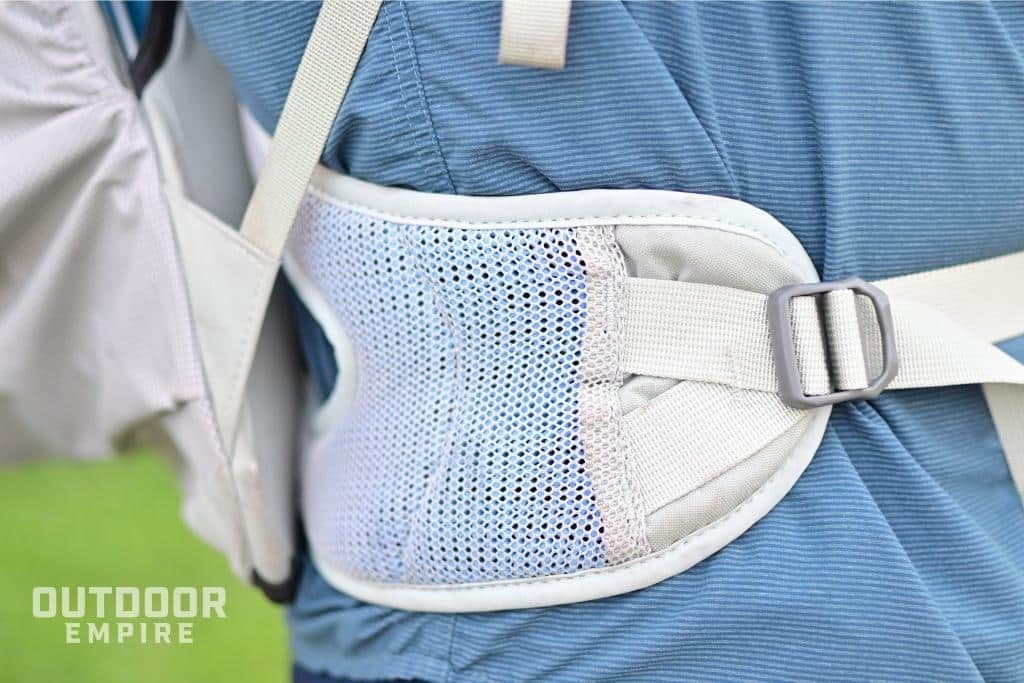
Comfort
Comfort is subjective to each individual and I always suggest trying on as many packs as possible before buying one. It is also best to load it up with the same gear that you would carry on a regular trip. A pack carries differently with a 20-pound sandbag than with 20 pounds of actual gear.
One of the key differences between the packs on this list is the back panel. The Osprey and the Gregory both have trampoline-style back panels. This allows air to flow between your back and the pack. This ventilation allows your back to stay cooler and dryer throughout the day. The separation also means that hard items in your pack are not pressed right against your back, causing discomfort.
The downside to this back panel style is that it pushes the pack’s center of gravity away from your back and causes the pack to feel like it is pulling you backward.
Both the Hyperlite Mountain Gear and the Gossamer Gear packs have minimal material on the back panel and lie directly against your back. There is no ventilation and anything hard can press right into your back, but it keeps the center of gravity closer to your back, making the pack feel lighter.
The Sierra Design pack has a back panel that is somewhere in between.
- Most comfortable: Gregory Focal 48
- Least sweaty back: Gregory Focal 48 and Osprey Levity 45
- Least amount of pack sway: Hyperlite Junction 2400 and Gossamer Gear 50
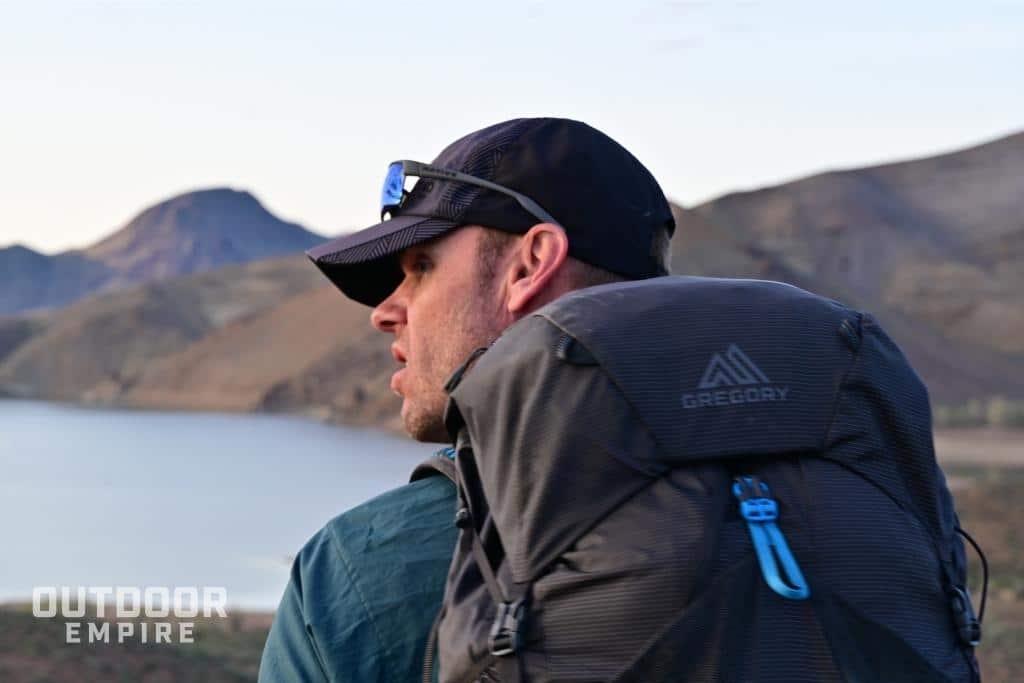
Versatility and Accessories
The packs on this list were not designed to be Swiss Army Knives of backpacking. They were designed to carry a light load all day in comfort. That, in general does not make them very versatile.
That being said, the two standouts for me on this list are the Sierra Designs Flex Capacitor and the Hyperlite Junction.
The Flex Capacitor is versatile due to its range of capacity. It can be condensed down to 40 liters or balloon up to 60 liters. This is like having two packs in one. It can be used for everything from a quick overnight trip to long hauls where extra gear is needed.
On the other hand, I found myself using the Hyperlite Junction for multiple different tasks. Not only did I take it backpacking, but I also loaded it up with quilts and my camera to take to my kid’s soccer games. I even hiked to the construction site next to my house to load it up with rocks to fill in holes my dog dug in my backyard. I just found myself grabbing the pack for all sorts of non-backpacking activities.
One of the ways that manufacturers reduce weight on packs is by getting rid of pockets and clips. If you want to add back some of these things, don’t worry. Hyperlite Mountain Gear and Gossamer Gear make all kinds of accessories you can clip onto your pack. Just don’t go wild because they were originally removed to save weight.
- Best pack if you want two packs in one: Sierra Designs Flex Capacitor
- The pack that I ended up using the most for non-backpack related activities: Hyperlite Mountain Gear Junction 2400
- Most accessories: Hyperlite Mountain Gear and Gossamer Gear
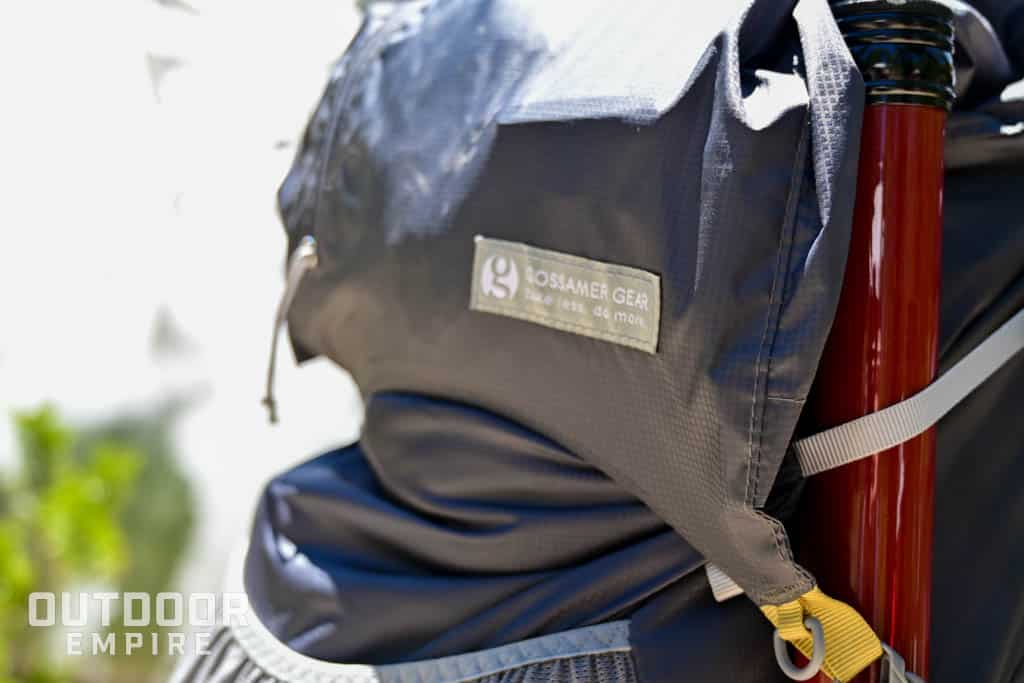
Value
In order to try and find a way to compare the value of these packs as objectively as possible, I divided the price by the volume to show how much the pack cost per liter of capacity.
| Pack | Price | Volume | Cost/Liter |
| Flex Capacitor | $190 | 40-60 Liters | $3.16/liter (at 60 liters) |
| Focal 48 | $220 | 48 liters | $4.58/liter |
| Gorilla 50 | $255 | 50 liters | $5.10/liter |
| Levity 45 | $250 | 45 liters | $5.55/liter |
| Junction 2400 | $349 | 49.8 liters | $7.00/liter |
Value, however, is not that simple of an equation and is subjective in nature. Value can be broken down into several different pieces, including how much you enjoy the pack, how long it lasts, and whether it does the job that you bought it for.
The other thing to consider is how often a pack goes on sale. The packs from the more mainstream manufacturers like Osprey, Gregory, and Sierra Designs go on sale more often than the packs from Gossamer Gear and Hyperlite Mountain Gear. I love shopping deals, and finding something on sale adds value to me.
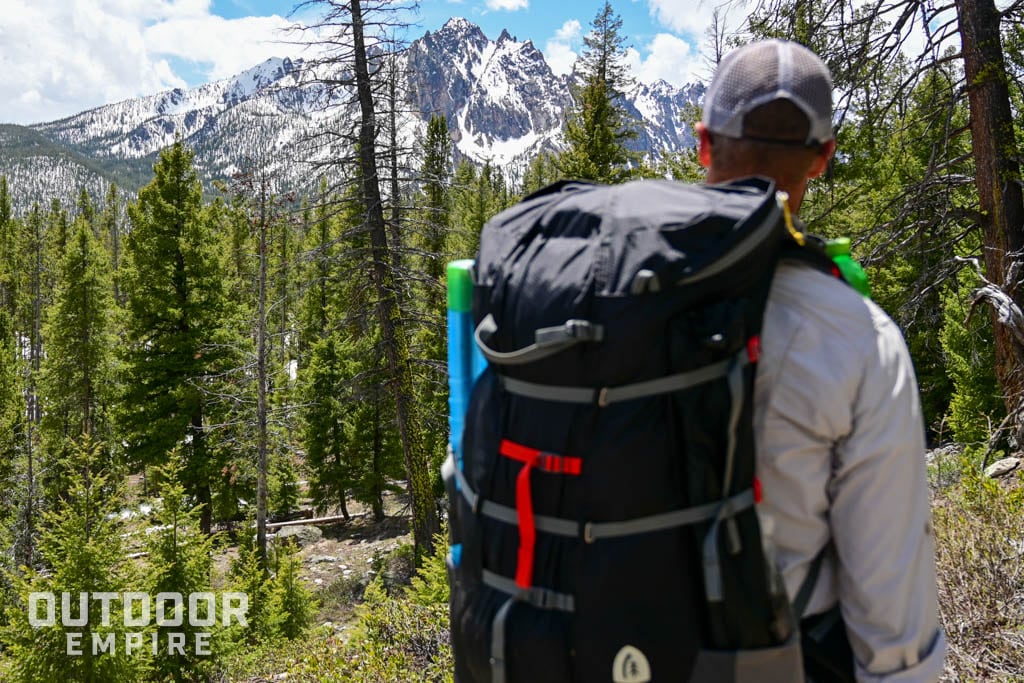
Final Thoughts
There you have it—the Outdoor Empire roundup of the best ultralight packs on the market.
Remember that the best pack in the world has no value sitting in a closet. So use this buyer’s guide to find the best ultralight backpack for you, then get out there and use it!
| Pack | Outdoor Empire Score | Price | Weight | Max Carry Weight |
| Junction 2400 | 4.3/5 | $349 | 1.94 lbs | 30 lbs |
| Focal 48 | 4.2/5 | $220 | 2.54 lbs | 30 lbs |
| Gorilla 50 | 4.1/5 | $255 | 1.9 lbs | 30 lbs |
| Levity 45 | 3.9/5 | $250 | 1.85 lbs | 25 lbs |
| Flex Capacitor 40-60 | 3.6/5 | $190 | 3.1 lbs | 40 lbs |
All packs were mediums except for the Sierra Designs Flex Capacitor, which was medium/large.
Related: Best Ultralight Backpacking Tents Reviewed
Why Trust Us?
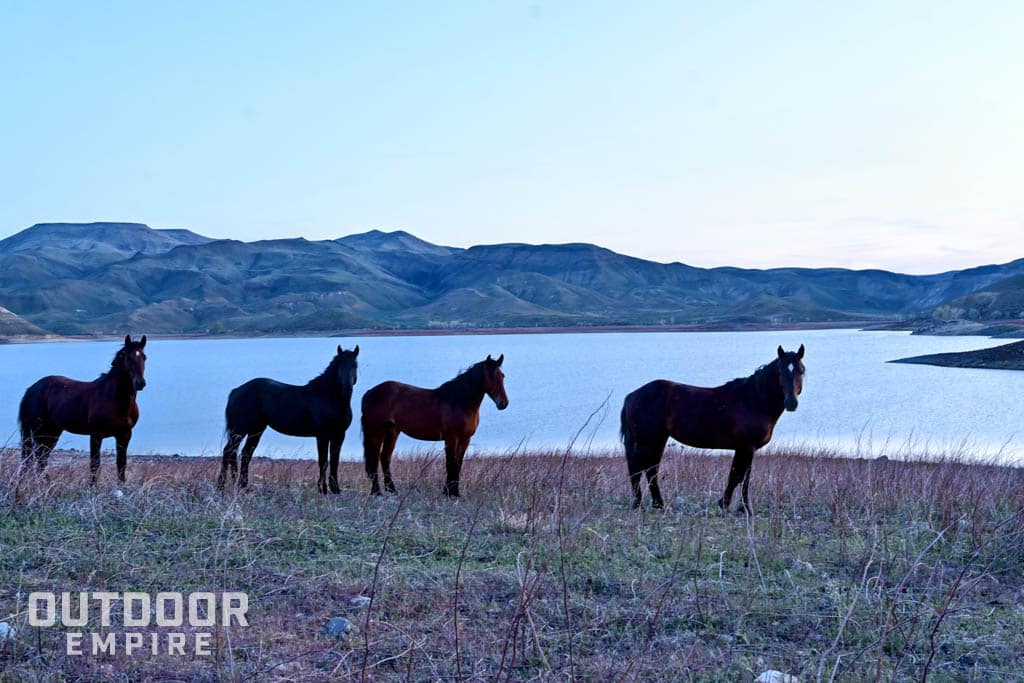
We know it’s hard to find gear advice you can trust. At Outdoor Empire we aim to provide honest, objective, hands-on reviews rather than just regurgitating information found somewhere else on the internet. Our process is continuously evolving and improving.
Here are a few reasons you can trust our advice in this article:
- We actually purchased every product mentioned in this article.
- We objectively tested and ranked each product listed here.
- Besides “testing”, we used this gear in real life for an extended period of time.
- We spent our own money on products and expenses related to this article.
- While we occasionally accept product samples or discounts to help stretch our gear budget further so we can produce more gear guides, we do not accept paid or sponsored reviews.
- The opinions, experiences, and results expressed in this article are our own, authentic, and unbiased. Nobody paid us for our favorable opinion.
- We recommend the same products to you that we do to our friends and family.


